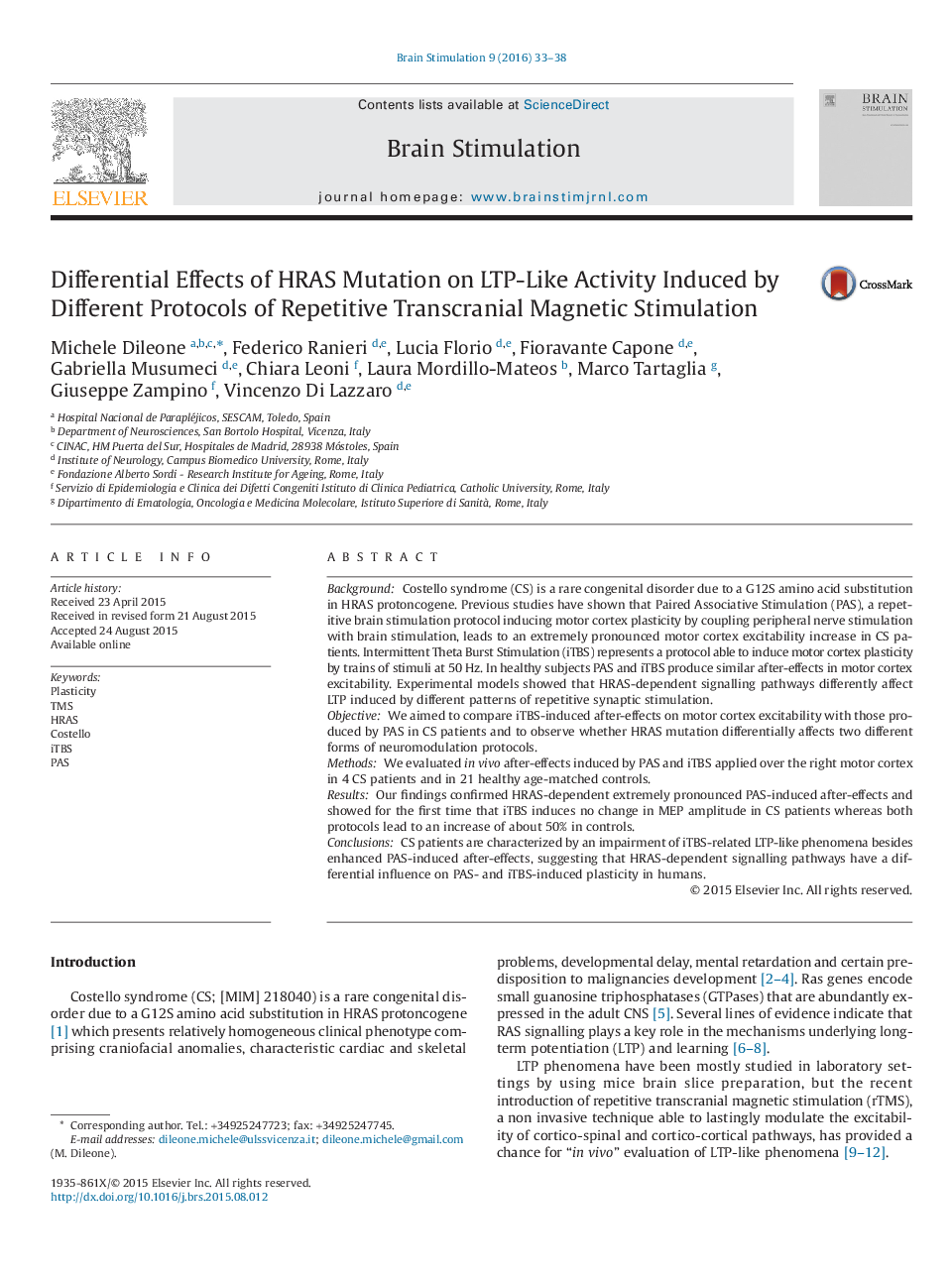| کد مقاله | کد نشریه | سال انتشار | مقاله انگلیسی | نسخه تمام متن |
|---|---|---|---|---|
| 6005115 | 1184659 | 2016 | 6 صفحه PDF | دانلود رایگان |

- Costello syndrome (CS) is due to a gain of function mutation in HRAS that is involved in LTP-like phenomena.
- PAS and iTBS induce a similar enhancement in brain excitability in healthy subjects.
- PAS leads to a pronounced increase in motor cortex excitability in CS, but no data about the effects of iTBS are available.
- Unlike healthy subjects, PAS and iTBS induced differential effects on motor cortex excitability in CS.
- HRAS differentially influences iTBS- and PAS-induced plasticity in humans.
BackgroundCostello syndrome (CS) is a rare congenital disorder due to a G12S amino acid substitution in HRAS protoncogene. Previous studies have shown that Paired Associative Stimulation (PAS), a repetitive brain stimulation protocol inducing motor cortex plasticity by coupling peripheral nerve stimulation with brain stimulation, leads to an extremely pronounced motor cortex excitability increase in CS patients. Intermittent Theta Burst Stimulation (iTBS) represents a protocol able to induce motor cortex plasticity by trains of stimuli at 50âHz. In healthy subjects PAS and iTBS produce similar after-effects in motor cortex excitability. Experimental models showed that HRAS-dependent signalling pathways differently affect LTP induced by different patterns of repetitive synaptic stimulation.ObjectiveWe aimed to compare iTBS-induced after-effects on motor cortex excitability with those produced by PAS in CS patients and to observe whether HRAS mutation differentially affects two different forms of neuromodulation protocols.MethodsWe evaluated in vivo after-effects induced by PAS and iTBS applied over the right motor cortex in 4 CS patients and in 21 healthy age-matched controls.ResultsOur findings confirmed HRAS-dependent extremely pronounced PAS-induced after-effects and showed for the first time that iTBS induces no change in MEP amplitude in CS patients whereas both protocols lead to an increase of about 50% in controls.ConclusionsCS patients are characterized by an impairment of iTBS-related LTP-like phenomena besides enhanced PAS-induced after-effects, suggesting that HRAS-dependent signalling pathways have a differential influence on PAS- and iTBS-induced plasticity in humans.
Journal: Brain Stimulation - Volume 9, Issue 1, JanuaryâFebruary 2016, Pages 33-38